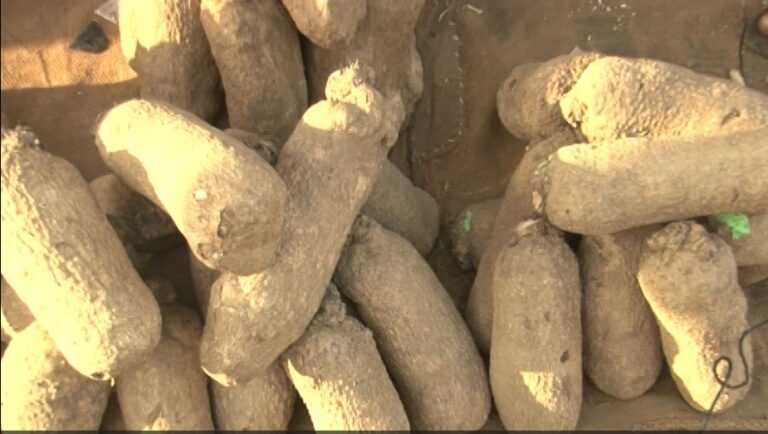Price of yam has increased over 200% within a year – GAWU General Secretary


The prices of yam in various markets have increased more than twice as compared to the beginning of the year.
Yam, which was selling at 15 cedis is now selling 40 cedis and 50 cedis depending on where you are buying from. Traders are attributing what they described as exorbitant increment to its scarcity and transport fares as well as general cost of living.
A visit to Mallam Atta Market in the Greater Accra Region revealed that a tuber of yam is sold at between GH20.00 and GH55.00. According to one of the traders who spoke on condition of anonymity, “the increase is as a result of the increase in transportation fare and all of that. So, if something could be done to ensure that the transport cost is reduced, I believe that the cost of yam could come down.” She told 3news.
Another trader, Madam Comfort explained how she used to sell a tuber of yam a few months ago and how much it costs now. She noted that, “the least price you could get here is GHC25.00.”
She attributed the price hike to the dollar to cedi exchange rate. She said, “the more the cedi depreciates, the more everything else, including fertilisers imported into the country also go up, which is resulting to high cost of production and they are passing the cost to us and we also pass it to the final consumer.”
Checks from the Northen Region, a place considered as Ghana’s food basket by our correspondent, Christopher Amoako indicates that 3 tubers of yam which used to sell at GHC25.00 is now GHC70. The situation was not different in the Western Region.
General Secretary of the Ghana Agricultural Workers Union, Mr. Edward Kareweh, cited the current economic situation as a reflection of the current hikes in yam prices.
“We have never experienced it whereby price of yam is going up above 200 percent increase. So, this is something that we need to investigate. And for us, it is a reflection of the poor performance of the economy. The economy of Ghana is in bad state.” – Mr. Kareweh spoke to Alfred Ocansey on TV3’s Ghana Tonight
He added that “We have been monitoring the price increases in the foodstuffs in general, including yams. And apart from yams, all other foodstuffs are experiencing unexpected price increases. This is not a season for yam. We expect price of yam to be up, but not at this level.”
He concluded that nothing is working well, “But the unfortunate thing is that whereas we have always experienced other sectors of the economy not working well, this time around, it is at the heart of the economy, that is agriculture. And if we are unable to address the challenge within the agriculture sector, it means that we are failing to address problems that are hitting at the core of the economy.”





